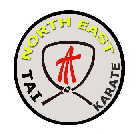|
Escrima
Information from WIKIPEDIA.ORG
Eskrima or Escrima refers to a class of Filipino Martial Arts that emphasize stick and sword fighting. Other terms which have entered into common usage include Kali and Arnis de Mano (harness of the hand); occasionally the abbreviation FMA (Filipino Martial Arts) is used. Eskrima and Arnis are among the many names primarily used in the Philippines today to refer to these arts. The name Kali, although primarily used in the United States and Europe, is seldom used in the Philippines and in most cases is an unknown word. But due to the popularity of the term outside of the Philippines and the influence of foreign practitioners, the term Kali is increasingly being recognized and accepted in the Philippines. Kalis, as used in the Philippines, refers to a sword. It is commonly mistaken as synonymous to or a derivative form of kali (note: postfixing of "s" is not used in Filipino languages or dialects to indicate plurality). However, for all intents and purposes, Eskrima, Arnis, Arnis de Mano, Kali and FMA all refer to the same family of Filipino weapons-based martial arts.
The teaching of the basic skills in FMA are traditionally simplified. With limited time to teach flashy and intricate techniques, only skills that were proven effective in battle and could easily be taught en masse were used. This allowed villagers, who were generally not soldiers, a measure of protection against other villages, as well as foreign invaders. This philosophy of simplicity is still used today and is the underlying base of the FMA.
Because of this approach, the FMA are often mistakenly considered to be "simple" fighting arts. However, this refers only to its systematization, not effectiveness. To the contrary, beyond the basic skills lies a very complex structure and a refined skillset that takes years to master.
Many different systems of Eskrima exist, many of which can trace their origins to a single tribe or region. Some of the most famous systems from and in the Philippines are San Miguel Eskrima, Doce Pares, Balintawak, Modern Arnis, Kalis Illustrisimo/Bakbakan and the Black Eagle Eskrima, while in the United States the Inayan System of Eskrima, Sayoc Kali, Serrada Escrima, Lameco Eskrima and Dog Brothers Martial Art are popular.
Practitioners of these arts are noted for their ability to fight with weapons or empty hands interchangeably. Most Eskrima systems include fighting with a variety of weapons, striking with hands and feet (suntukan, sikaran, tadyakan/tadiyakan), grappling and throwing (dumog), biting and whatever skills needed to complete a warrior's training in the old days of tribal warfare. Perhaps the only major fields that have not been given as much emphasis as in the past in modern eskrima training today are skills needed for fighting effectively in groups and hilot - a Filipino system of first aid, healing and herbal medicine traditionally taught alongside eskrima but that has now virtually disappeared.
In most systems, skills with weapons and with empty hands (unarmed) are developed concurrently using training methods designed to emphasize their common elements. The most common variations used are single stick (solo baston), double stick (double baston) and sword/stick and knife (espada y daga). Some systems are known to specialise in other weapons such as the whip and staff.
For more information on Escrima please visit wikipedia.org by
clicking here
|
|
|  |
|
|
